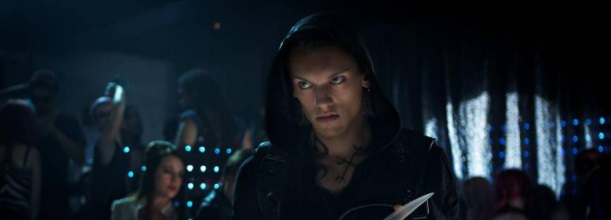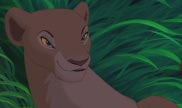Why we scare kids

Last week, Henry Barnes wrote a wonderful piece on the brilliantly sinister Pink Elephant Parade in Dumbo. He labels the segment ‘a fascinating and hostile piece of filmmaking’, and upon watching, it’s hard to disagree. But it’s also hard to pinpoint what, in this stomping, druggy haze of pachyderms, is so frightening.
I was first taught to fear film by something I never properly saw. As a four year old without a television, the chance to repeatedly watch Fantasia at my best friend’s house was not to be sniffed at. The prancing unicorns and dancing broomsticks were a colourful treat, but for years it was switched off before the penultimate chapter – a swirling, demonic interpretation of Mussorgsky’s Night on Bald Mountain.
It’s a gorgeous piece of animation. In the closing scenes of the film, morning light comes to sedate the devil with lanterns, and Ave Maria. This restored balance is no challenge for the immediacy of the fear children experience when howling creatures whirl across a screen, even on a fuzzy video in the corner of a living room. Not being allowed to watch it cemented its terror in my mind – the myth of the mountain was more persistent than the images themselves could have been.
Edward Scissorhands scared me, too. I was very small, and seeing him emerge from that corner of the attic caused me to cower into the next room, where my parents were eating dinner with friends. Such a reaction seemed obvious at the time – he had scissors for hands! – when clearly, you’re supposed to be falling in love with him (and I did, much later).
People’s first cinema terrors come in all shapes and sizes. A brief poll on twitter spat out, amongst others, Labyrinth, Return to Oz, Watership Down, The NeverEnding Story, the aforementioned Dumbo, Fantasia, and basically anything with Roald Dahl’s name on it. Dahl is a master of this kind of fear. Not the shouting, explicit fear which Zwart is attempting, but a quiet sneakiness that chills your blood. These witches aren’t terrorising towns on broomsticks, they’re silently hiding amongst us, booking convention rooms in bland seaside hotels. The Witches was ostensibly a children’s film, adapted from a children’s book, but gets talked about as a purveyor of genuine trauma.
Children’s films have somehow been filed in our collective conscience as a safe space, a pleasant, soft land filled with happy little creatures and gentle character arcs. But the landscape of children’s filmmaking is one to be explored, and experimented in. In turn, children navigate this world, peeking into dark corners to find the shapes their fears will take. Often, these shapes are unexpected, unexplained.
The things which stick with us, creeping into our adult nightmares, aren’t always as simple as the bloody violence of a thriller, viewed too young. These were complex tales, not designed to solely frighten or placate, nor to entertain or amuse, but to do all these things while telling a story. It’s not only the scary bits of children’s films which resonate – show me an adult who can watch the opening scene of Up without becoming a blubbering wreck, and I’ll show you a psychopath. But something about the sideways, sinister scares of children’s films embodies fear itself. That feeling sticks around long into adulthood, a watermark of our weirdest dreams and anxieties.





My Girl.
COVERED IN BEEEEEEES